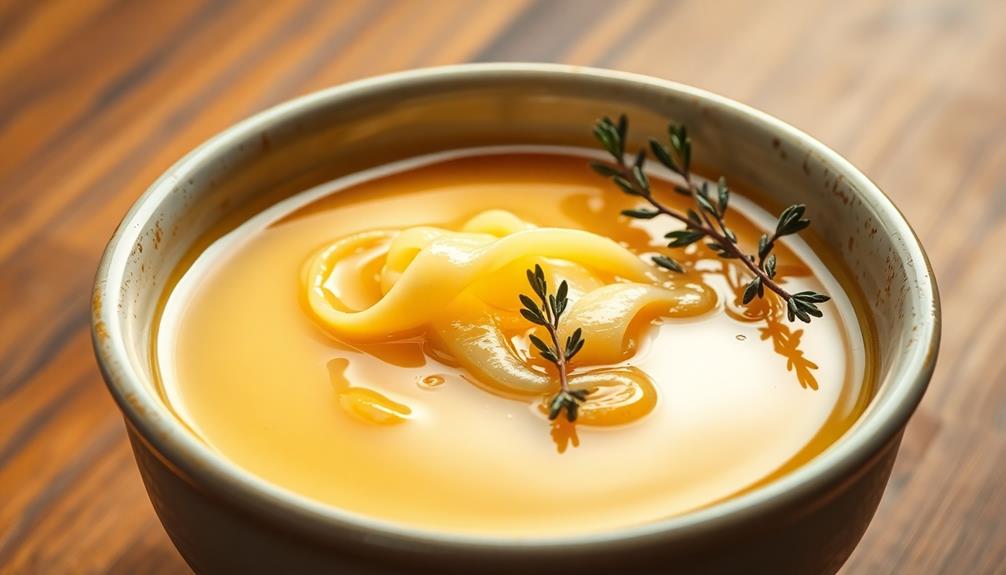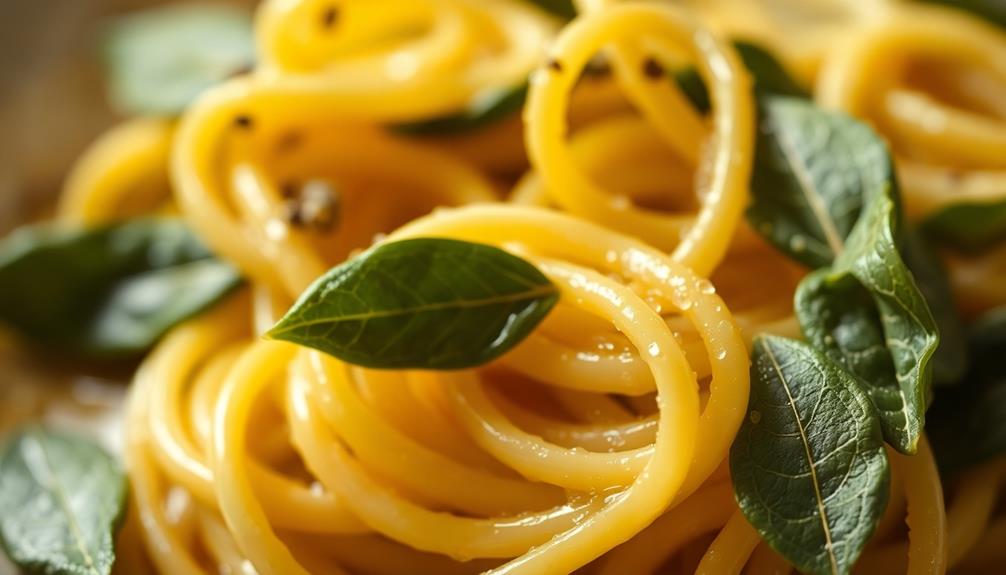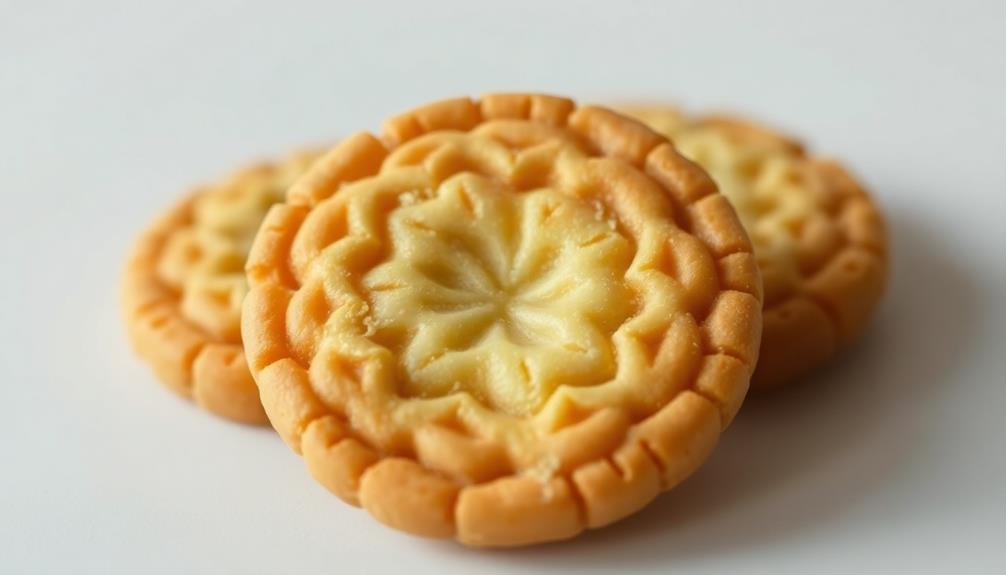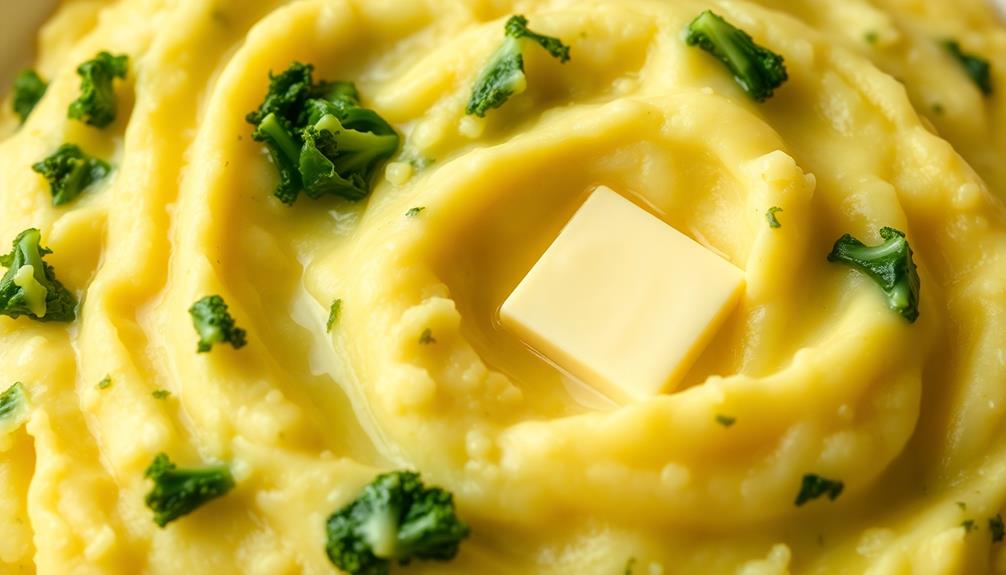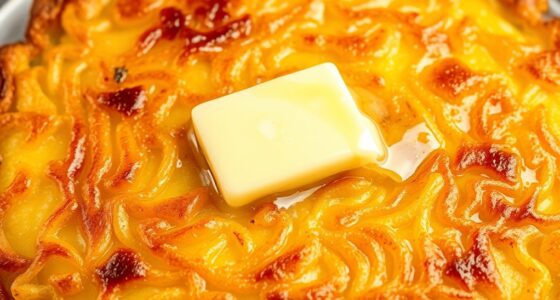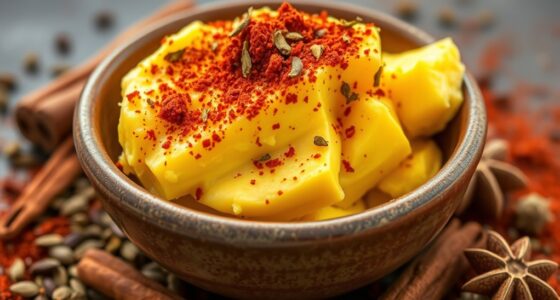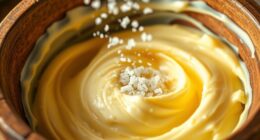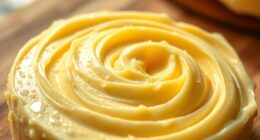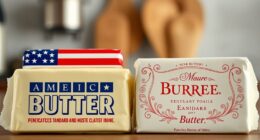If you haven't experienced the silky, luxurious delight of French Butter Soup, you're in for a real treat! This centuries-old culinary staple has captivated the hearts and taste buds of the French for generations. Originating as a delicacy for aristocracy, this soup showcases the elegance of simplicity – a harmonious blend of rich butter, creamy broth, aromatic chives, and a hint of nutmeg. Prepare to be transported to a cozy Parisian café as you indulge in the velvety texture and comforting flavors of this beloved French comfort food. You won't believe how effortlessly it can elevate your dining experience.
Key Takeaways
- French Butter Soup is a culinary staple in France, with a history dating back to the 17th century as a delicacy for the aristocracy.
- The soup's silky, velvety texture is achieved through the slow simmering of butter, cream, and aromatic ingredients like chives and nutmeg.
- The key ingredients, including butter, cream, chives, and nutmeg, contribute to the soup's rich, indulgent flavor profile and luxurious mouthfeel.
- Preparation is relatively simple, making this soup an accessible and impressive dish for home cooks to recreate.
- French Butter Soup is a beloved comfort food that embodies the elegance and tradition of French cuisine, offering a hug-in-a-bowl experience.
History
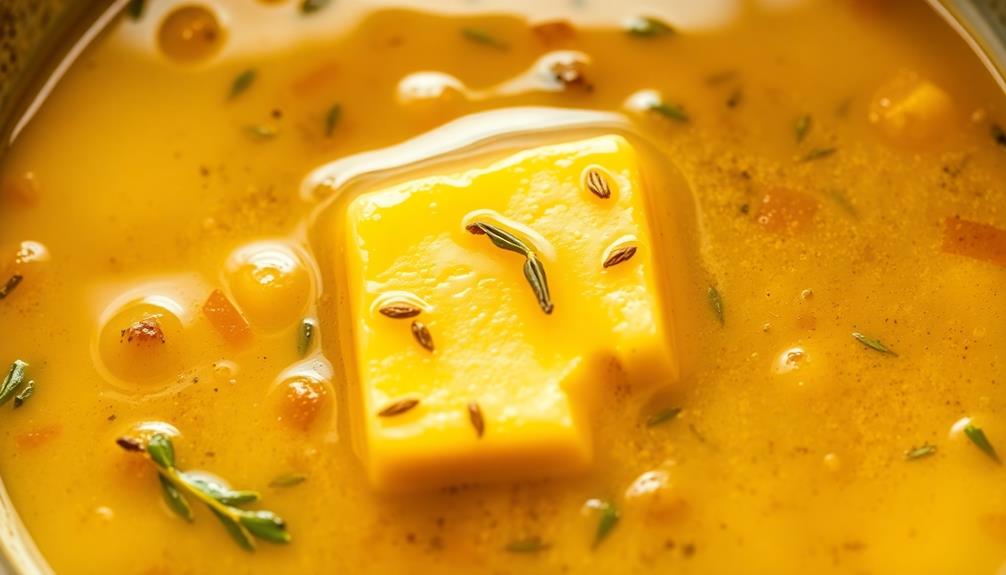
Butter has long been a culinary staple in France, with its rich, creamy texture and distinct flavor. For centuries, French cooks have incorporated this versatile ingredient into a wide array of dishes, from buttery pastries to savory sauces. Its significance is deeply rooted in history, as evidenced by its role in butter's evolution in culinary traditions.
It's no surprise, then, that butter would eventually find its way into the realm of soup.
The origins of French Butter Soup can be traced back to the 17th century, when it was enjoyed as a luxurious delicacy among the French aristocracy. The soup's silky, velvety consistency was achieved by slowly simmering butter, milk, and a variety of aromatics until the flavors melded together in perfect harmony.
Over time, the recipe evolved, with different regions and chefs putting their own unique spin on the classic dish.
Today, French Butter Soup remains a beloved comfort food, a rich and indulgent way to savor the essence of this iconic French ingredient. Whether enjoyed as a starter or a main course, this soup offers a truly decadent taste of French culinary history.
Recipe
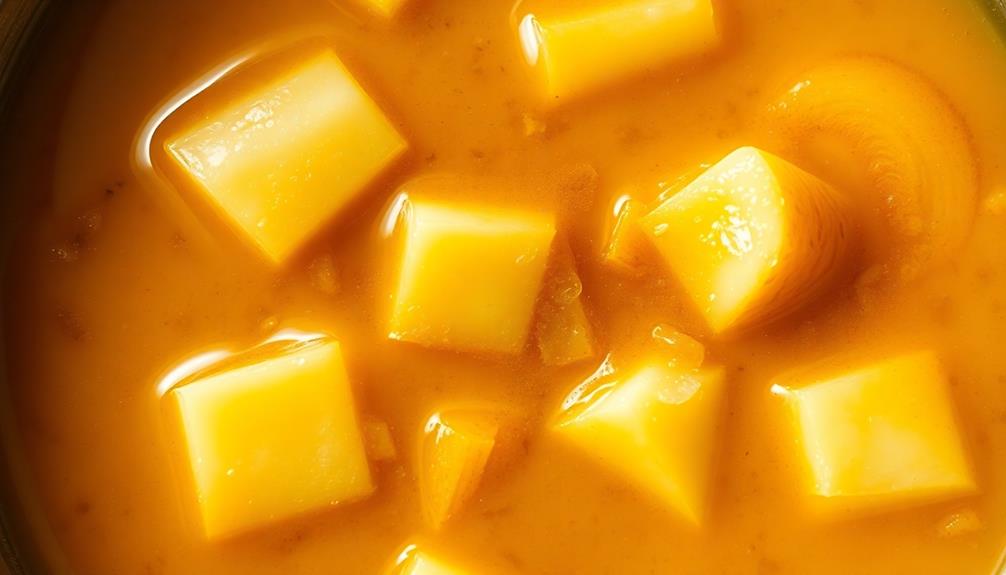
Butter soup is a beloved dish in French cuisine, offering a rich and comforting experience. This recipe showcases the simplicity and elegance of this classic dish, allowing the natural flavors of the ingredients to shine. With the addition of essential oils for respiratory health, the aroma of the soup can be enhanced, creating a soothing atmosphere that complements the dining experience.
At the heart of this soup lies the finest, creamiest butter, which is gently melted and infused with aromatic vegetables and a touch of seasoning. The result is a velvety, indulgent broth that envelops the palate with its luxurious texture and subtle flavors.
Ingredients:
- 1 lb unsalted butter
- 1 onion, finely chopped
- 2 carrots, peeled and sliced
- 2 celery stalks, sliced
- 4 cups chicken or vegetable stock
- 2 bay leaves
- Salt and white pepper to taste
- Chopped parsley for garnish (optional)
In a large pot, melt the butter over medium heat. Add the onions, carrots, and celery, and sauté until the vegetables are softened, about 10 minutes.
Pour in the stock and add the bay leaves. Bring the mixture to a simmer and cook for 30 minutes, allowing the flavors to meld.
To enhance the richness of the soup, consider garnishing each serving with a sprinkle of fresh chopped parsley. The delicate herbal notes will complement the buttery goodness of the dish.
Enjoy this French butter soup as a comforting and indulgent meal, savoring the simplicity and elegance that make it a true culinary treasure.
Cooking Steps
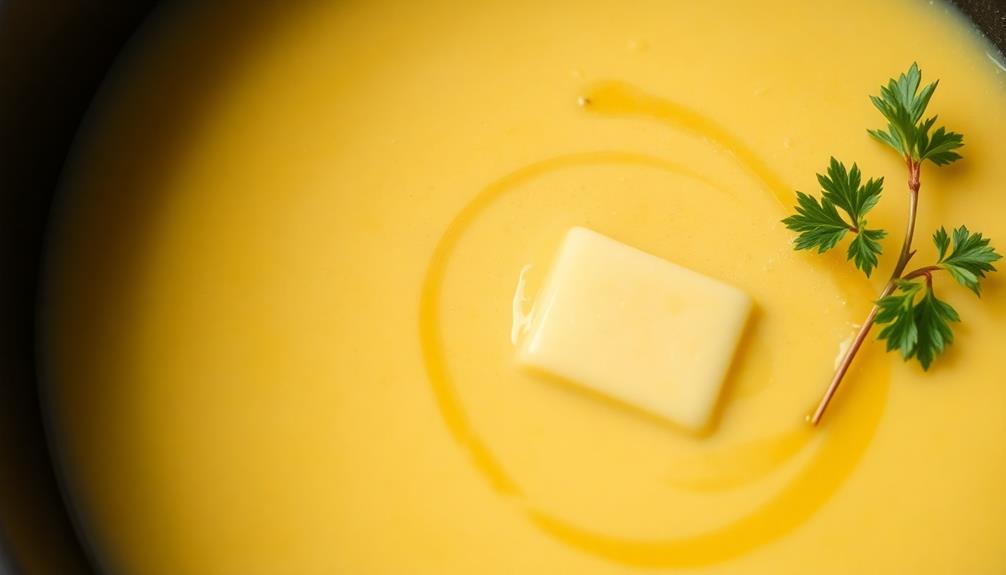
Melt that butter in a saucepan over medium heat, allowing it to become bubbly and fragrant, which enhances the rich, creamy flavor essential for this dish.
Butter adds rich flavor that will elevate your soup to a new level of sophistication.
Once it's nice and bubbly, stir in the heavy cream. Whisk in the broth and seasonings, then let it simmer until it thickens up just a bit.
Don't forget to garnish with fresh chives for a pop of color and flavor!
Step 1. Melt Butter in Saucepan
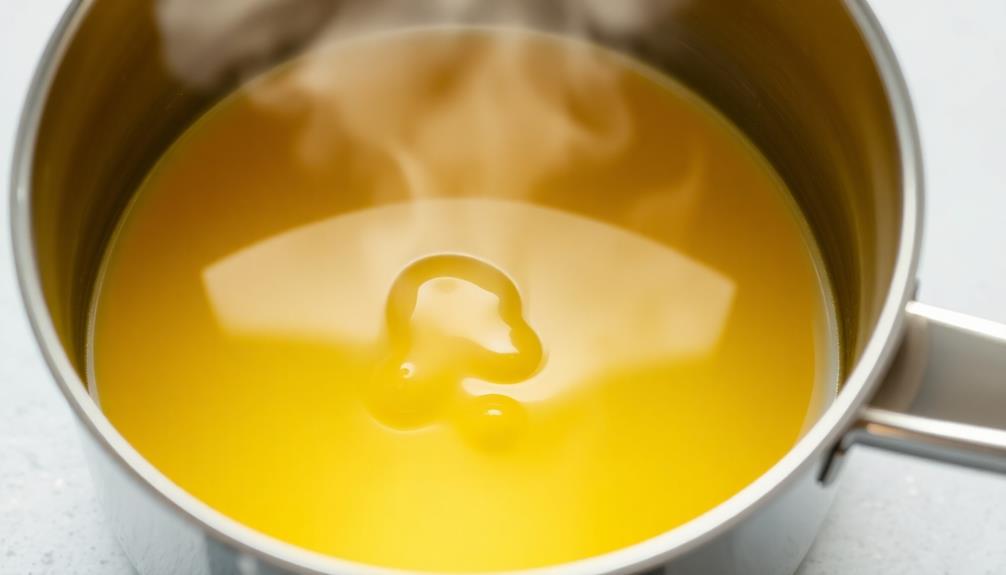
The saucepan sits patiently, awaiting the golden treasure that will soon grace its surface.
You'll want to use a medium-sized saucepan for this recipe, one that will accommodate the volume of the soup.
Gently place the pan over medium heat and let it warm up. Once it's nicely heated, it's time to add the real star of the show – the butter.
Unwrap the cool, creamy sticks and drop them into the pan, watching as they immediately begin to melt. The aroma of rich, decadent butter will start to fill the air, tantalizing your senses.
Use a wooden spoon to gently swirl and combine the melting butter, ensuring every inch of the pan is coated. As the butter liquefies, it will transform into a silky, golden elixir – the foundation for your soon-to-be luxurious French butter soup.
Keep a close eye, stirring frequently, until the butter is completely melted and the pan is evenly coated.
With this essential step complete, you're well on your way to crafting a soup that will delight the senses.
Step 2. Add Heavy Cream

With the butter now melted to a golden sheen, go ahead and pour in the heavy cream.
Feel the weight of the rich, velvety liquid as it sinks into the pan, immediately transforming the texture. The cream's luscious nature will start to thicken the mixture, creating a silky, luxurious base for your French butter soup.
As it gently simmers, the cream will seamlessly blend with the melted butter, infusing the entire concoction with an incredibly indulgent mouthfeel. You'll notice the soup taking on a richer, more opulent hue as the cream does its magic.
Stir the mixture occasionally, allowing the flavors to meld and the consistency to become perfectly smooth and creamy. This is a crucial step in achieving the velvety, spoon-coating texture that makes French butter soup so special.
Keep a close eye, as you don't want the cream to curdle or the soup to scorch.
Step 3. Whisk in Broth, Seasonings
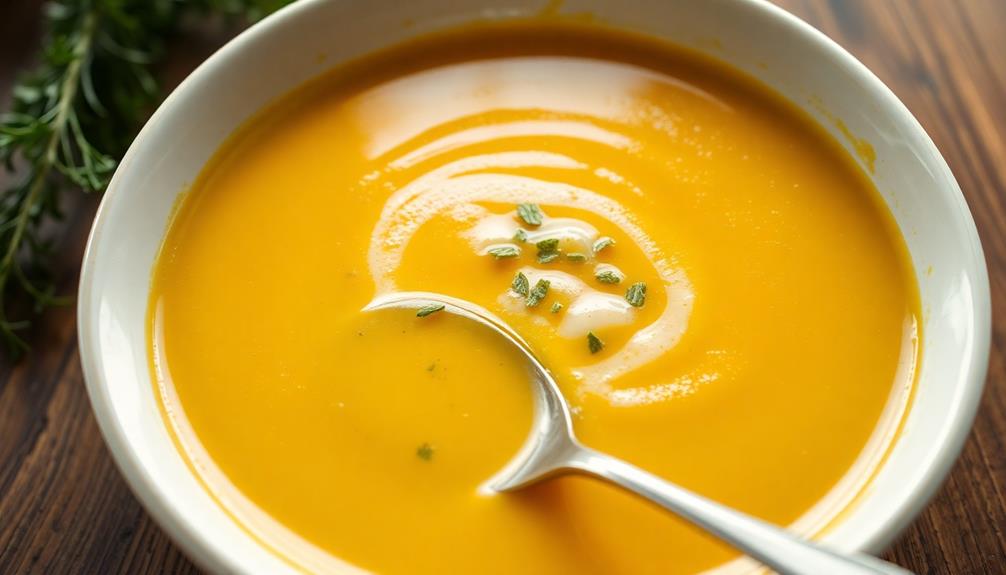
Broth-whisking time has arrived! In a large saucepan or Dutch oven, slowly whisk the warm chicken or vegetable broth into the melted butter until smooth and creamy. This gentle incorporation of the broth will create a luscious, velvety base for your French butter soup.
Now, it's time to season this silky elixir. Add a pinch of salt and a grind or two of fresh black pepper, whisking to combine. If you'd like to kick up the flavor, try a dash of cayenne or a sprinkle of nutmeg. Stir in a bit of dry white wine or sherry for an extra layer of complexity.
The key is to taste as you go, adjusting the seasonings until the balance is just right.
With the broth whisked and the seasonings added, your soup is well on its way to achieving that signature French butter soup texture – rich, smooth, and utterly indulgent. Get ready to ladle up a bowl of pure comfort!
Step 4. Simmer Until Slightly Thickened
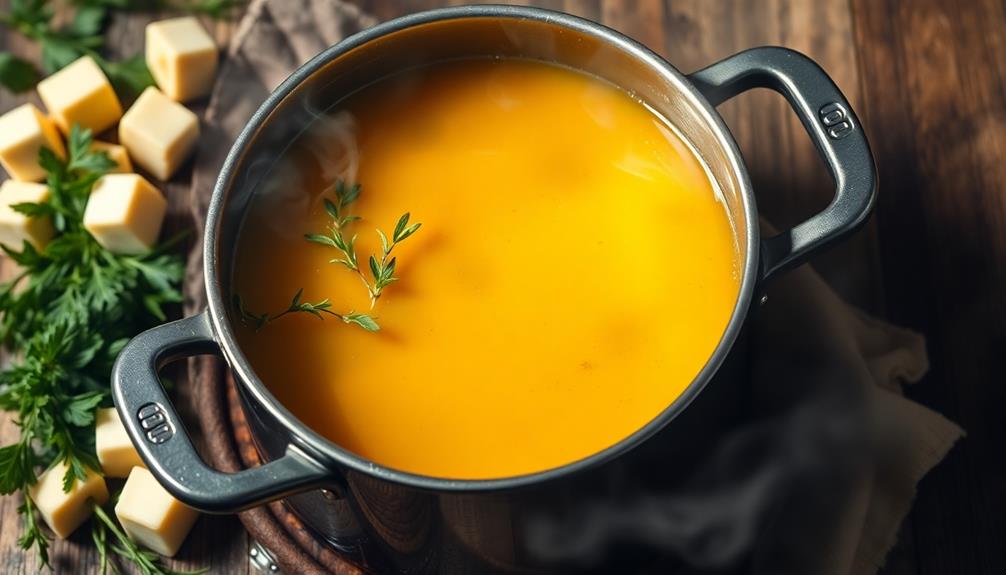
After whisking the broth into the melted butter, let the mixture simmer gently over medium heat, stirring occasionally, until it thickens slightly, about 10-15 minutes.
You'll notice the soup becoming silkier and more luxurious as it simmers. Give it a stir now and then to prevent any scorching on the bottom of the pot.
The flavorful broth will slowly melt into the rich butter, creating a velvety, aromatic base. Breathe in the heavenly aroma – this is where the magic happens!
Keep a close eye, adjusting the heat as needed to maintain a gentle simmer. You want the soup to thicken just enough to coat the back of a spoon, but not become too dense.
This gradual thickening process allows the flavors to meld and the texture to become wonderfully smooth and creamy. Soon, you'll have a pot of French butter soup that's ready to dazzle your senses.
Step 5. Garnish With Fresh Chives
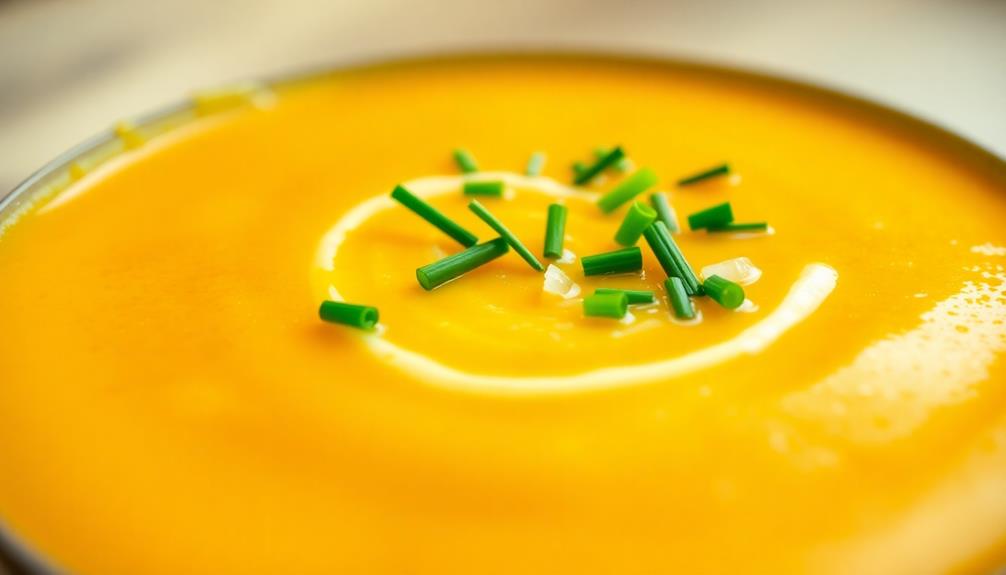
Once the soup has reached the desired silky, thickened consistency, it's time to add the final touch.
Grab a small handful of fresh, vibrant chives and give them a quick chop. The bright, grassy aroma of the chives will instantly elevate the rich, buttery flavors of the soup.
Sprinkle the chopped chives over the top of each serving, letting them cascade gently across the surface. Their delicate green hues will create a beautiful contrast against the pale, creamy soup.
As you take your first spoonful, the chives will add a lovely pop of freshness, cutting through the velvety texture. The combination of the silky, decadent soup and the crisp, herbal notes of the chives is simply divine.
This simple garnish transforms the French Butter Soup into a truly special and visually appealing dish. It's the perfect finishing touch to this luxurious and comforting creation.
Final Thoughts
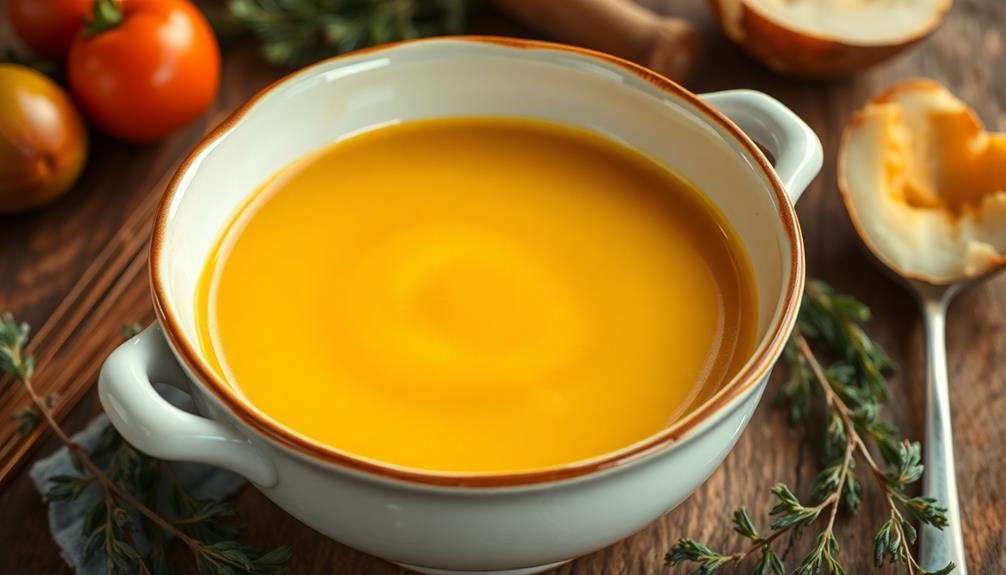
Ultimately, the French Butter Soup is a comforting and decadent dish that showcases the rich flavors of butter and cream. You'll be amazed by how a simple combination of a few ingredients can create such a luxurious and velvety soup.
The velvety texture coats your tongue, while the aromatic chives and subtle nutmeg provide a delightful contrast. This soup is the perfect choice when you're craving something indulgent yet comforting. It's like a hug in a bowl, warming you from the inside out.
Plus, it's surprisingly easy to make at home, so you can enjoy this restaurant-worthy dish anytime you desire. Whether you serve it as a starter or the main course, the French Butter Soup is sure to impress.
Garnished with a sprinkle of fresh chives, it's a sophisticated and elegant dish that'll have your guests raving. So why not give it a try and experience the magic of this silky, buttery delight?
Frequently Asked Questions
What Is the Difference Between French and Regular Butter?
The key difference between French and regular butter is that French butter typically has a higher fat content, giving it a richer, creamier texture and more pronounced flavor compared to the more neutral-tasting regular butter.
Can I Use Any Type of Milk in the Recipe?
You can use any type of milk in the recipe, but the type of milk will affect the final texture and flavor of the soup. Whole milk or cream will result in a richer, creamier soup, while low-fat or skim milk will produce a lighter, less indulgent version.
How Can I Make the Soup Thicker or Creamier?
To make the soup thicker or creamier, you can try adding more butter, blending a portion of the soup, or using a roux to thicken it. Experiment with different techniques to achieve your desired consistency.
Is There a Vegetarian Version of This Soup?
To make a vegetarian version, you can replace the butter with olive oil or plant-based butter. Blend in cashews or silken tofu for a creamy, lush texture without the dairy. Customize the flavor with herbs and spices to your liking.
How Long Does the Soup Last in the Refrigerator?
The soup can last up to 4 days in the refrigerator when stored in an airtight container. Be sure to consume it within that time frame for optimal freshness and flavor.
